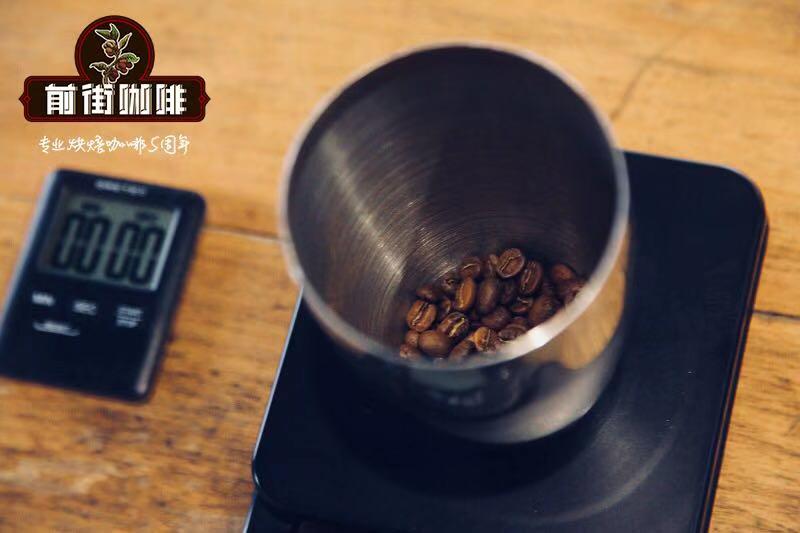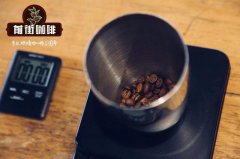An introduction to the characteristics of Yega Xuefei Coffee in the area of Yega Xuefei

Professional coffee knowledge exchange more coffee bean information please follow the coffee workshop (Wechat official account cafe_style)
Qianjie-Yega Xuefei Sun Coffee
Learn about naturally processed Ethiopian coffee from the Yargacheffe region, which is one of the most valuable single source coffee sources in the world.
There are too many reasons to like African coffee, especially Ethiopian coffee. Ethiopia's coffee industry is mired in history, tradition, and a blend of facts and historical fiction. From the story of Kaldi and his ant goat to the lofty tone expressed by coffee lovers with the word "Yirgacheffe", Ethiopian coffee is reminiscent of pure coffee romance. Go on. It rolled off its tongue.
Ethiopian coffee ranges from rich, sweet and fruity to light, citrus and floral, depending on how it is processed. When you hear that people are enthusiastic about coffee in the famous Irgachev region, they mainly refer to washed or wet coffee. This is a delicate, floral and tea-shaped coffee with a light citrus flavor and a clean, light fuselage.
The distinction between natural processing and washing processing in Ethiopia has a long history. As we all know, Ethiopia is a famous "birthplace of coffee", with coffee plants all over the lush green highlands. Its thousands of local coffee varieties have been grown and enjoyed for hundreds of years-wet processing plants appeared a long time ago. Natural processing is the natural processing of freshly picked coffee beans scattered in the sun to dry. It has always been the traditional method of processing coffee, and it is by far the most common processing method. It has the flavor of tropical fruit and has a rich taste.
Many locals pick their own coffee beans from wild plants and put them in the backyard to dry, which is the equivalent of Ethiopia picking wild blueberries from the bushes in your backyard.
In short: everything is just for sharing and communication.
END
Important Notice :
前街咖啡 FrontStreet Coffee has moved to new addredd:
FrontStreet Coffee Address: 315,Donghua East Road,GuangZhou
Tel:020 38364473
- Prev

Characteristics of Yega Chefe Coffee beans in Ethiopian Coffee Bean producing area
Professional coffee knowledge exchange more coffee bean information please follow the coffee workshop (Wechat official account cafe_style) front street-Ethiopian coffee taste introduces the world-famous coffee beans, Yega Xuefei coffee beans. The definition of Yejasuefi was originally made from coffee beans produced in the town of Yegashefi in Ethiopia. For Ethiopia, imagine most of it.
- Next

Ethiopian Coffee Yega Sheffield Coffee characteristics what kind of beans does Yega Chefe Coffee belong to
Professional Coffee knowledge Exchange for more information about coffee beans please follow the front street of Coffee Workshop (Wechat official account cafe_style)-Ethiopian Coffee introduces Brazil, Mexico and Indonesia are the largest international coffee producers. But there's nothing like a perfect cup of Ethiopian coffee. Ethiopian Yargacheffe coffee is the most popular coffee in the world.
Related
- Beginners will see the "Coffee pull flower" guide!
- What is the difference between ice blog purified milk and ordinary milk coffee?
- Why is the Philippines the largest producer of crops in Liberia?
- For coffee extraction, should the fine powder be retained?
- How does extracted espresso fill pressed powder? How much strength does it take to press the powder?
- How to make jasmine cold extract coffee? Is the jasmine + latte good?
- Will this little toy really make the coffee taste better? How does Lily Drip affect coffee extraction?
- Will the action of slapping the filter cup also affect coffee extraction?
- What's the difference between powder-to-water ratio and powder-to-liquid ratio?
- What is the Ethiopian local species? What does it have to do with Heirloom native species?

